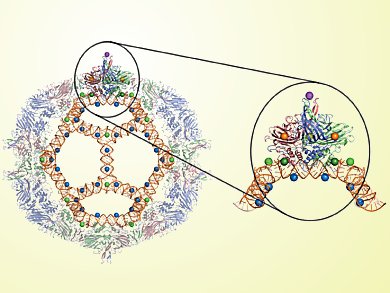Reidun Twarock, University of York, UK, in collaboration with Pierre-Philippe Dechant, University of Durham, UK, and colleagues has shown that a mathematical tool which he has developed earlier and which gives insights into how different components of a virus mutually constrain each other’s structures, applies more widely in the natural world.
By extending and adapting this earlier work on affine symmetry in the context of viruses, the team found that it also accounts for the structures of carbon onions, Russian-doll-like arrangements of carbon cages. The different shells of a carbon onion were found to be collectively modelled via an affine symmetry. It was known previously that individual shells could be modeled using symmetry techniques, but that the entire structure is collectively constrained by a single symmetry principle is a surprising new result.
The work shows that affine icosahedral symmetry is ubiquitous in nature. Apart from orchestrating the distribution of material at different radial levels in a virus, it models nested carbon cage structures such as fullerenes. In the future this insight might be useful for nanotechnology applications.
- Viruses and Fullerenes – Symmetry as a Common Thread?,
Pierre-Philippe Dechant, Jess Wardman, Tom Keef, Reidun Twarock,
Acta Cryst. 2014, A70, 162–167.
DOI: 10.1107/S2053273313034220




